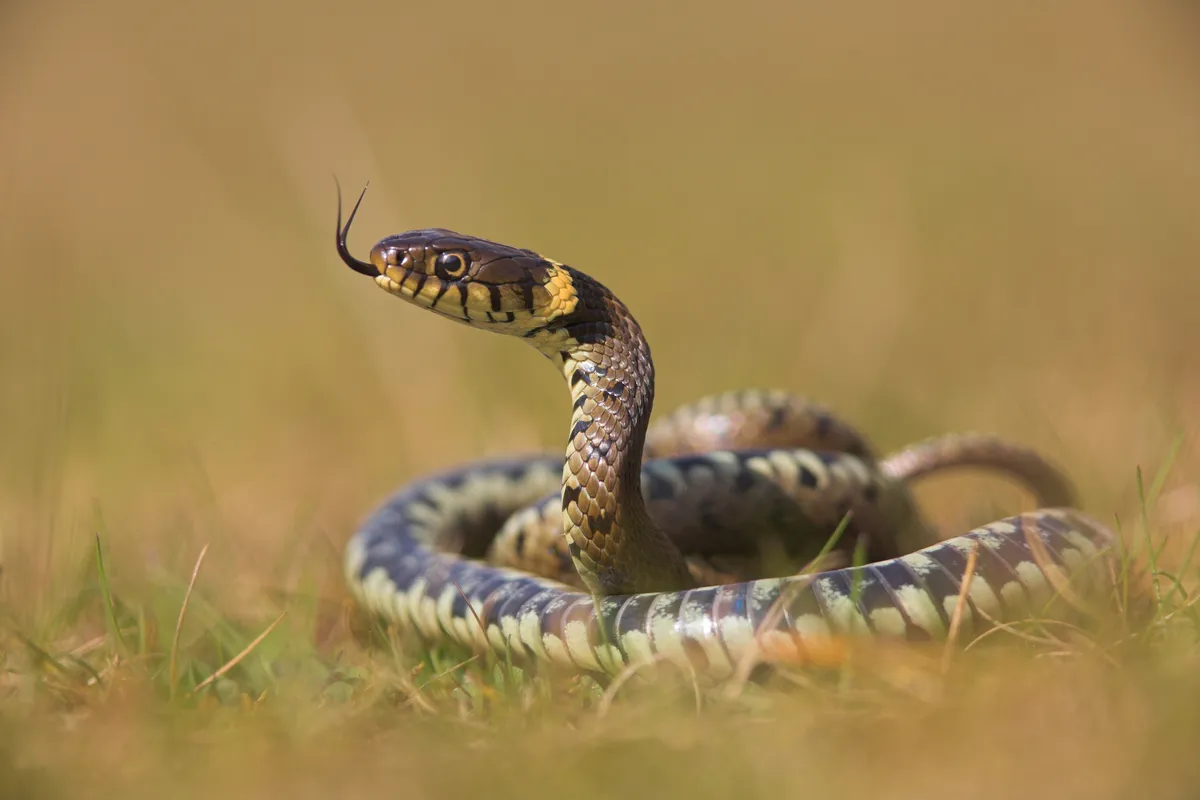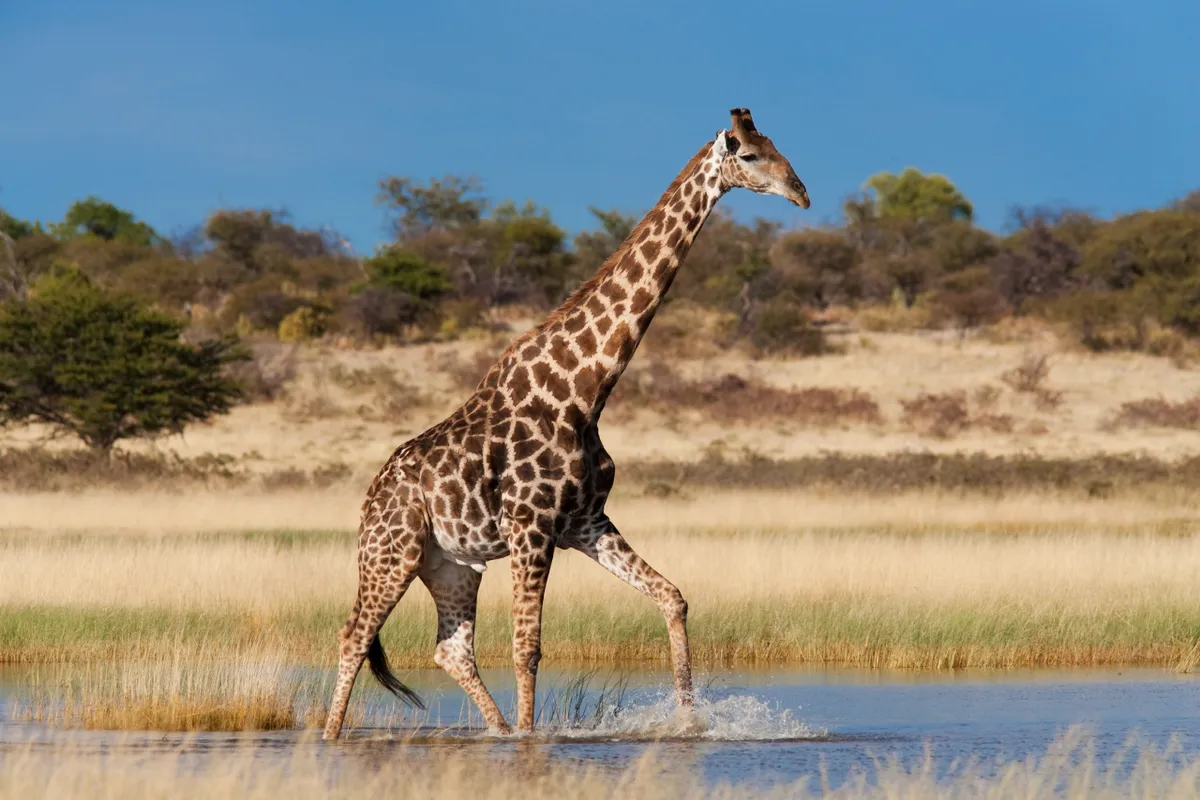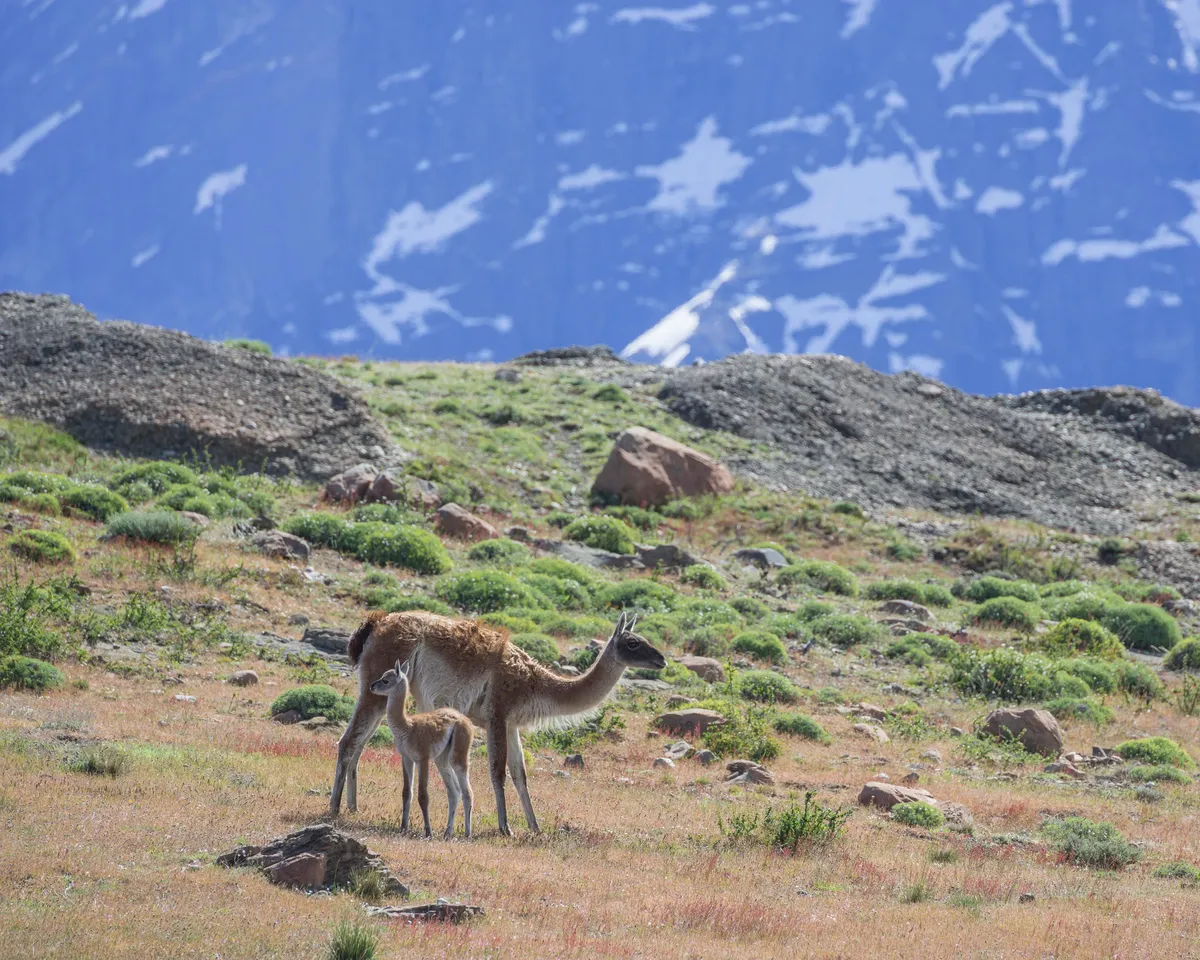From the much-feared Gila monster to the elegant giraffe, here are 14 animals starting with the letter 'G'
Animals that start with the letter 'G'
Grass snake

Both the largest native snake and native terrestrial reptile found in the UK, the grass snake (renamed the barred grass snake following a split by taxonomists in 2017) can grow up to 180cm. They don’t usually grow this large, but do regularly grow to more than a metre long.
Giant hummingbird
A study – using tiny GPS backpacks to monitor their migrations – discovered that the giant hummingbird was actually two distinct species that had been separated for millions of years. The migration of the giant hummingbird was witnessed by Charles Darwin in 1834.
Green tiger beetle
Metallic green in body colour with purple-bronze legs, the green tiger beetle is a fierce predator of heathlands, grasslands and sand dunes, where it hunts down other invertebrates.
Giraffe

The world’s tallest living terrestrial animals, giraffes usually measure between four to five metres in height, but the tallest was almost six metres. However, these tall mammals, famous for their long necks, still have the same number (seven) of cervical vertebrae in their necks as humans.
Goliath bird-eating spider
The largest spider in the world by both body length and mass, the goliath-bird eating spider is an impressive tarantula found in South America. Despite the name, this spider doesn’t normally eat birds. Instead, its diet mostly consists of insects, with some frogs and rodents.
Grizzly bear

The grizzly bear is a subspecies of the brown bear and is found only in North America, and is one of the larger subspecies. As an omnivore, it eats a variety of prey animals including large mammals and fish, as well as grasses and berries.
What is the biggest bear in the world?
Greenland shark

Greenland sharks, one of the world's weirdest sharks, are a bit of a mystery. Because they have no fin spines or har tissues, it is hard to estimate their age. Carbon dating estimated that one female was aged between 272 and 512 years old, the lower estimate of which still makes this fish the longest-lived vertebrate.
Guianan cock-of-the-rock

One of only two cock-of-the-rock species (Rupicola genus), the Guianan cock-of-the-rock is found in South America. While females are brown in colour, to help them blend into their environment, the males are a shocking bright orange colour and they group together to form leks and show off to the females. We named cock-of-the-rock one of the weirdest birds in the world.
Gila monster
The Gila monster is a large reptile found in southwest USA and northwest Mexico, and is named after the Gila River Basin. It is the largest living lizard species in the USA, and although venomous, it is not usually a threat to humans. It mainly eats small vertebrates, and eggs.
Gadwall

A pretty little duck, the gadwall is smaller than the mallard. It is more grey in colour and has a white wing patch – most easily seen in flight. A 2016 estimate places the number of UK breeding pairs at around 1250.
Goldcrest
![Goldcrest [Regulus regulus]](https://c02.purpledshub.com/uploads/sites/62/2023/04/GettyImages-1370675878-2ed224d.jpg?webp=1&w=1200)
The colourful goldcrest is the UK's smallest bird. The average goldcrest is no longer than 9cm and weighs around 5g, about the same as a 5p coin. They have a wingspan of around 14cm
Golden eagle

The golden eagle is a magnificent raptor and the second largest bird of prey in the UK, after the reintroduced white-tailed eagle. Even when spotted soaring at a distance, it is distinctive enough to distinguish it from the white-tailed eagle and other birds of prey such as the buzzard and the red kite.
Did you know the golden eagle is Mexico's national animal?
Guanaco

The guanaco is the wild relative of the llama and alpaca, and is one of the largest terrestrial mammals found in South America, standing between 1-1.3m in height at its shoulder.
Gorilla

There are two species of gorilla - the eastern gorilla (Gorilla beringei) and western gorilla (G. gorilla). Each of these is divided into two subspecies - eastern lowland gorilla (G. b. graueri) and mountain gorilla (G. b. beringei), and western lowland gorilla (G. g. gorilla) and cross river gorilla (G. g. diehli). We share 98.3% of our DNA with gorillas, making them our closest relatives after chimpanzees and bonobos.
